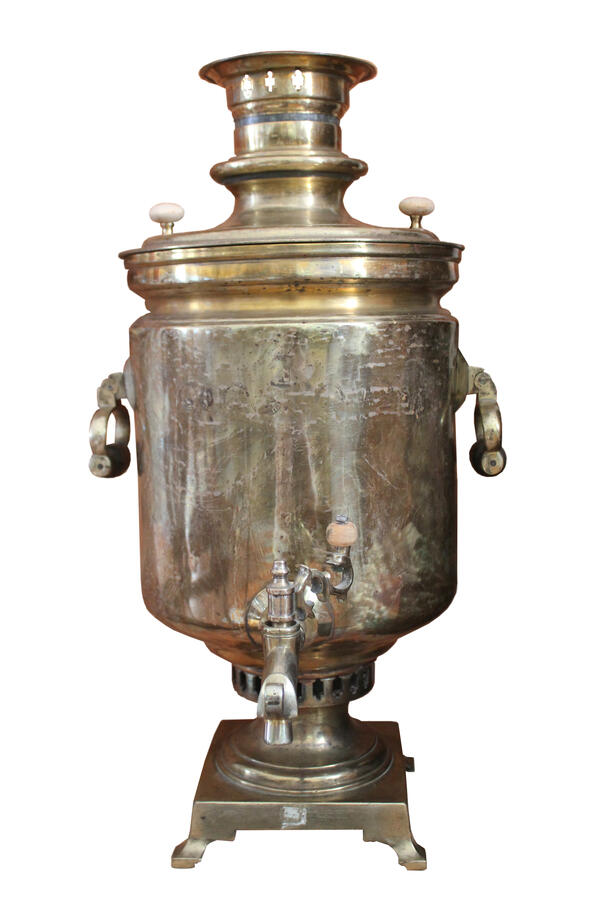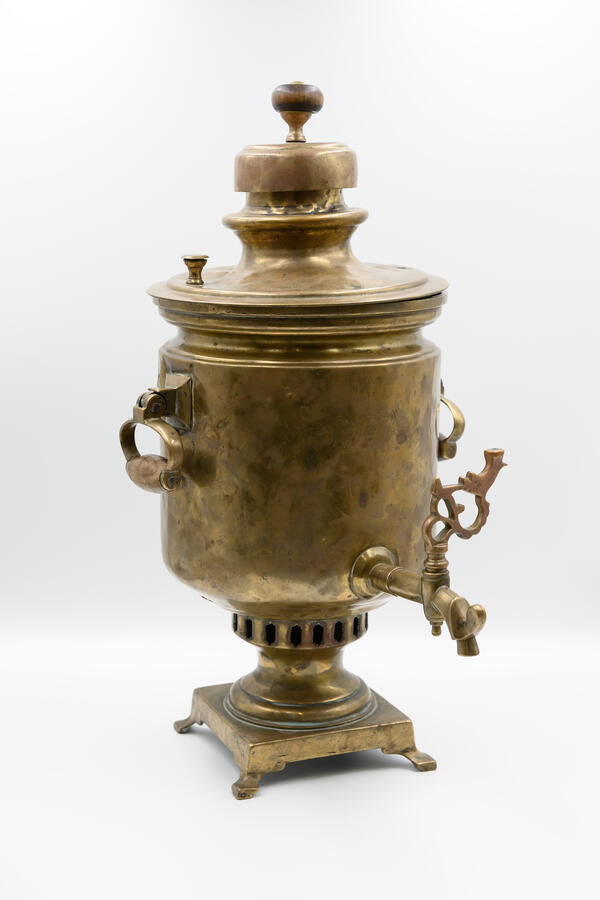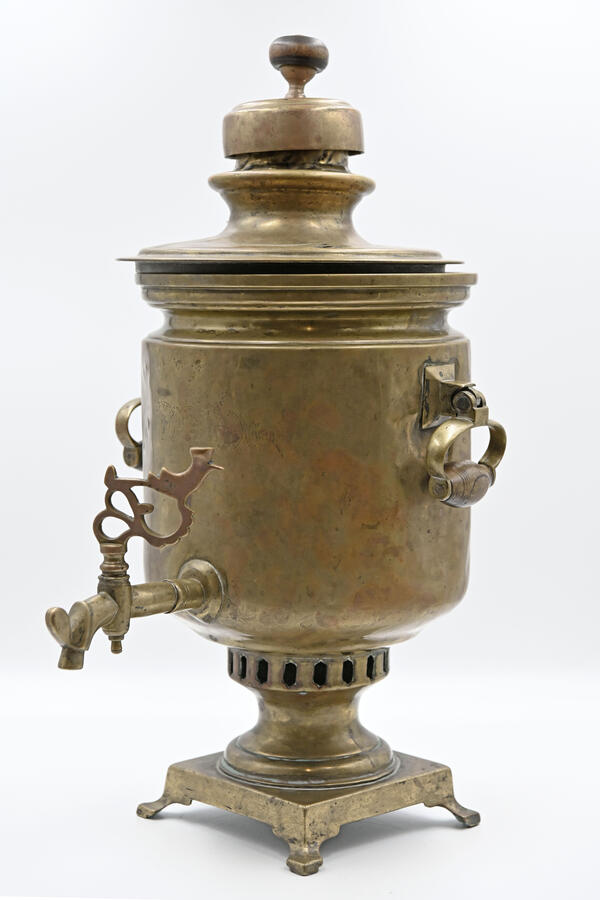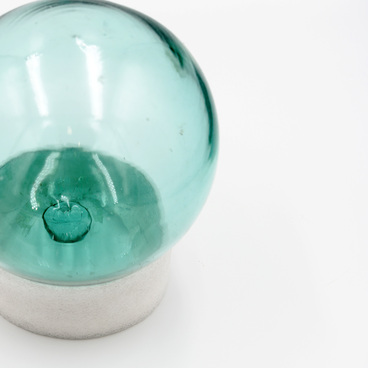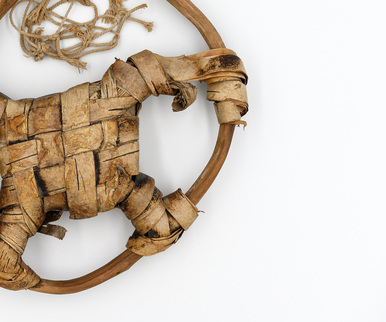The exhibition of the Polyarny Museum of History and Local Lore presents a brass chimney samovar made in the 1860s–1870s. It was kept in the house of Anna Konovalova, a resident of the village of Umba in the Tersky district of the Murmansk Oblast. It was used in the late 19th — early 20th centuries.
The word “samovar” consists of two words “sam” (self) and “varit” (boil) and refers to a device for boiling water. In Russia, samovars were a symbol of hospitality, mentioned in the works of classic literature, music, painting and oral folk art.Guests gathered at the samovar to have leisurely conversations. The “musical” qualities of the samovar were also highly appreciated: the sound it made when it was boiling was often referred to as its song which created a cozy atmosphere inside the house. As the samovar was very expensive, its presence spoke of the family’s well-being and wealth. High-quality samovars were often given to daughters as dowry.
The presented samovar has a small volume and is heated from the inside. It consists of several parts: a square-shaped base with four prominent short legs; a neck with a fire grate with shaped holes; a cylindrical body; an escutcheon plate (the place where the faucet spout is attached to the jug); a faucet spout with a valve handle (the screw for the handle was not preserved); two handles on canopies with wooden handles; a lid (the air vent was not preserved) with one figured handle (the second was not preserved); a chimney (jug); a cap with a wooden handle (the cap is larger than the pipe of the brazier; apparently it belonged to a different samovar). On the front part of the body above the tap, the impressions of five “medals” arranged in two rows are barely visible. The inscriptions on them are half-erased, but some still remain somewhat readable. The inscription of one medal in the topmost row reads: “COMMENDATORY SHEET…” The inscription below it reads: “SAMOVAR SOCIETY… 1879” , the second row contains the words — ”… DMITRIYEVICH GORNIN”, the third is unreadable, and the fourth — “FOR… AND THE ART GORNIN”.
A distinctive feature of
chimney samovars is that they can work on any wood fuel: coals, wood chips,
brushwood or cones. However, the internal chimney takes up a lot of space, and
therefore the samovar’s capacity for water is about half of its body’s volume.

